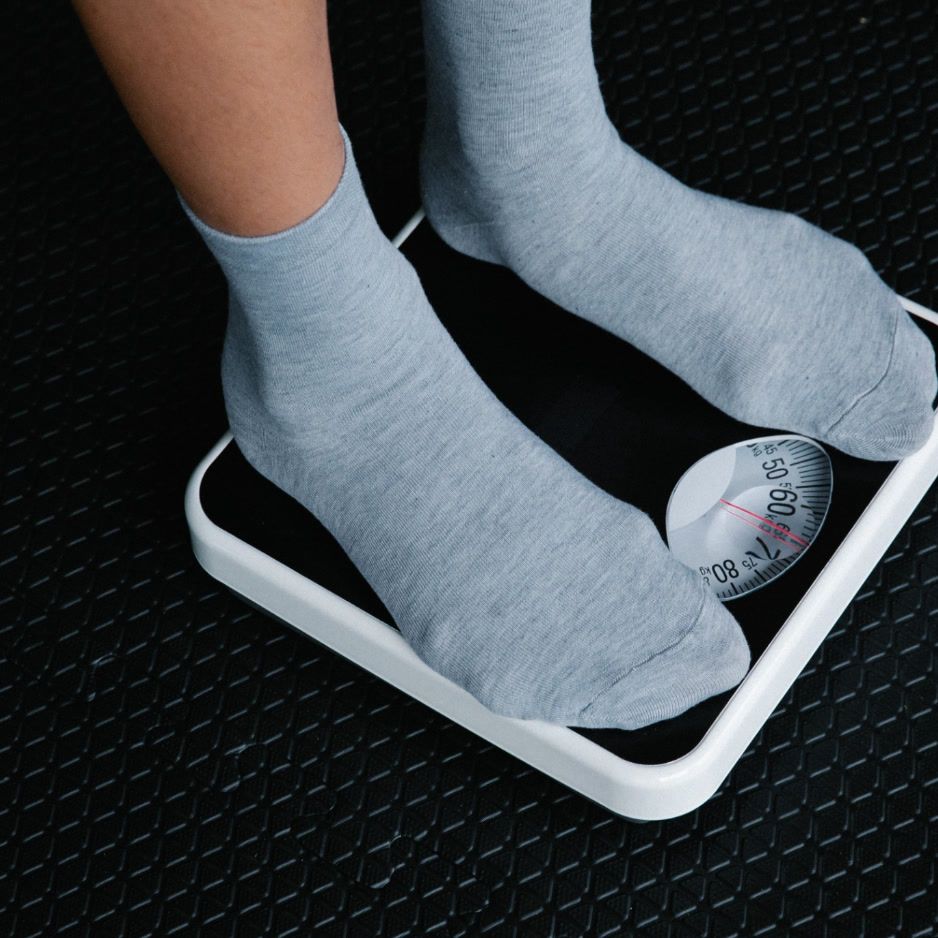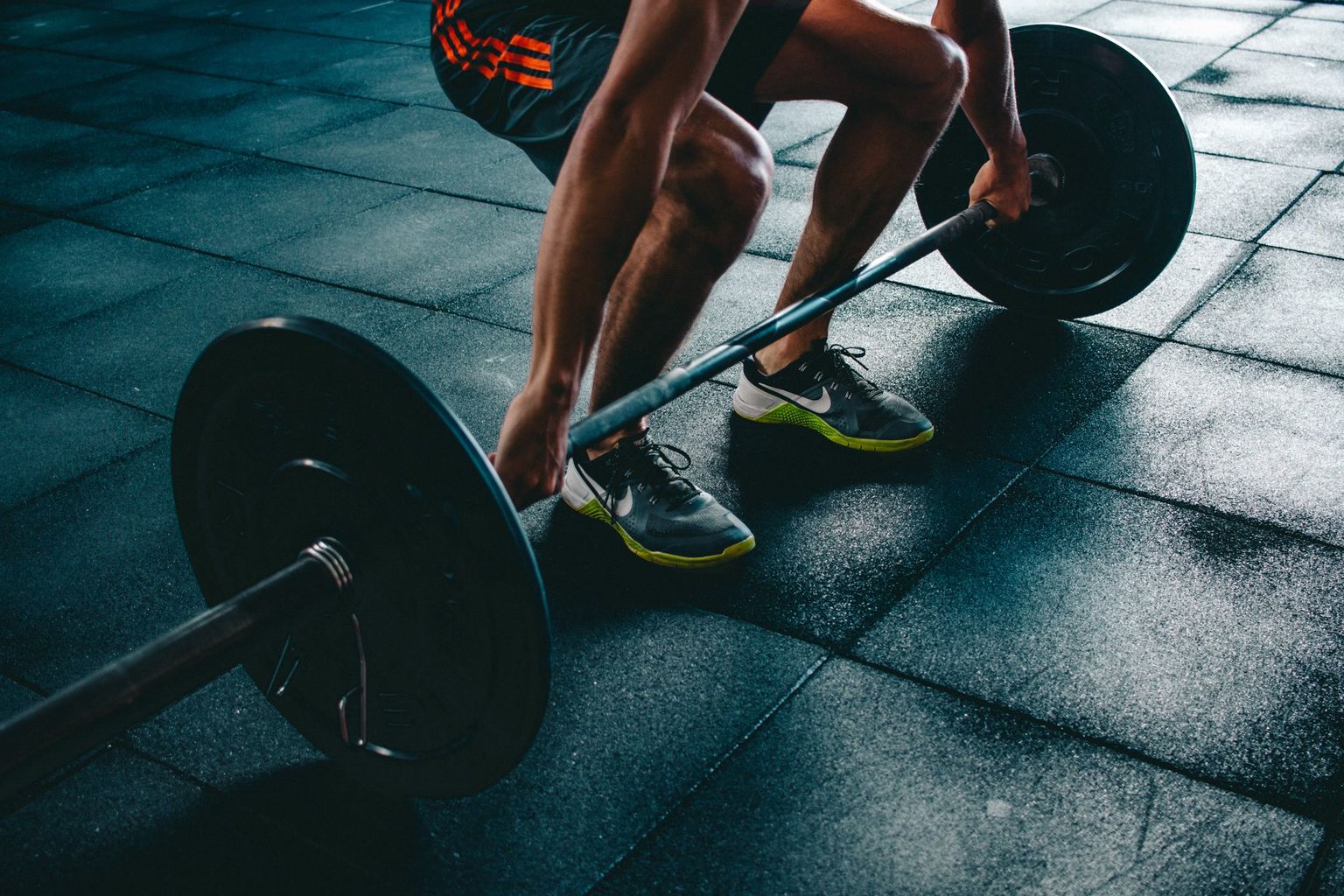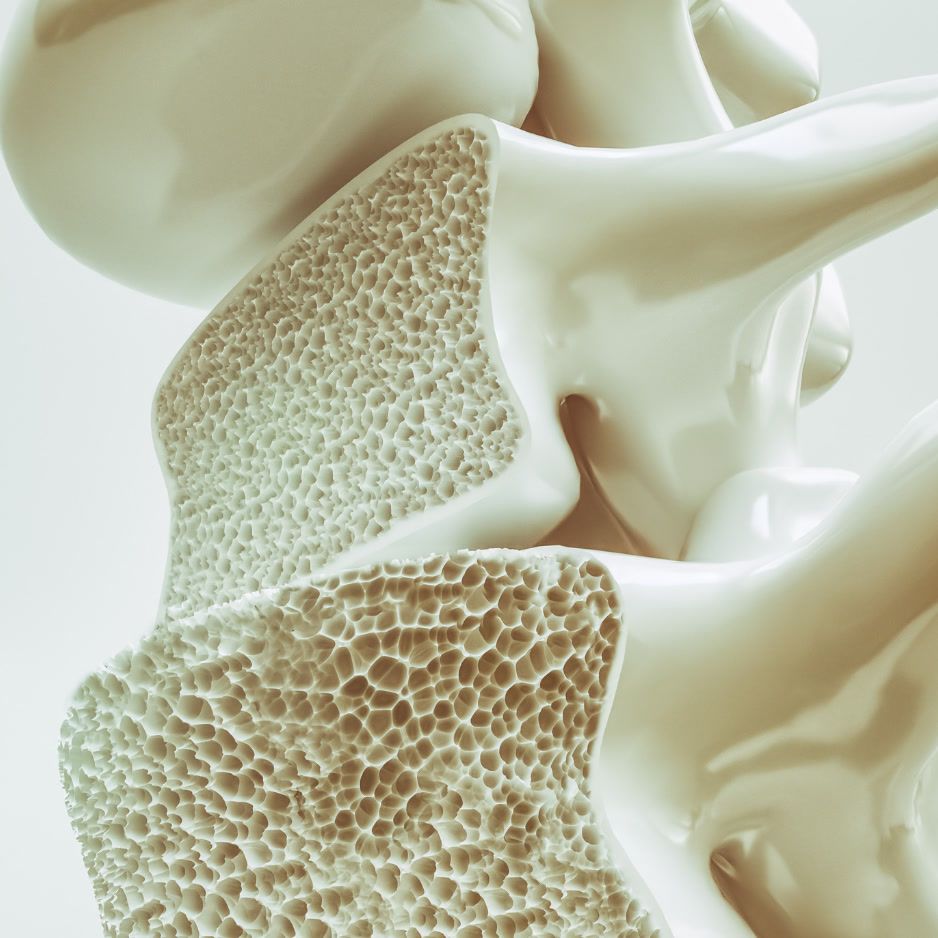Menopause Weight Gain: Causes and Solutions

Menopause Weight Gain: Causes, Diet & Exercise Solutions
Updated July 2025
At-a-Glance: Why Weight Gain Spikes After 40
| Driver | What’s Happening | Average Impact |
|---|---|---|
| Estrogen drop | Fat storage shifts from hips/thighs to abdomen | Avg. ~1.5 lb per year in the 50s (Mayo Clinic) |
| Calorie burn decline | Activity Energy Expenditure and, to a lesser extent, Resting Metabolic Rate fall during the transition | ≈ 100 kcal/day fewer by early post-menopause (longitudinal study by Poehlman et al., 1999) |
| Muscle loss (sarcopenia) | Less muscle → slower metabolism → easier fat gain | −1–2 % lean mass per year after 50 (BodySpec internal scan trends) |
| Sleep & stress changes | Hot flashes, cortisol spikes, night sweats | ↑ cravings & belly-fat storage (Harvard Health article) |
TL;DR Action Plan
- Know Your Numbers: Use the calculator below, then book a BodySpec DEXA scan for precise fat-vs-muscle data.
- Eat for Muscle, Not Just Fewer Calories: 1.2–1.6 g protein / kg body weight + 25 g fiber/day.
- Lift, Walk, Repeat: 2–3 strength sessions + 7,000–10,000 steps daily.
- Prioritize Sleep & Stress Tools: CBT-I, mindfulness, 10-minute post-meal walks.
- Consider HRT or GLP-1s if Needed: Individualized medical options can support fat loss & symptom control.
Interactive Tool: Personal Calorie & Protein Targets
Enter your current weight and activity level to see evidence-based calorie and protein ranges that preserve muscle while reducing fat.
Why Menopause Promotes Weight Gain
1. Hormonal Domino Effect
Declining estrogen down-regulates lipoprotein lipase in hips/thighs and up-regulates it in visceral fat depots, redistributing fat toward the belly (2022 analysis in EBioMedicine). Lower progesterone and androgens further reduce muscle-protein synthesis, amplifying sarcopenia. You can learn more in our detailed guide to Metabolic Changes During Menopause.
2. Metabolic Slowdown Explained
By early post-menopause, daily energy expenditure shrinks—largely because we move a bit less and burn slightly fewer calories at rest. Over time, this subtle shift nudges the energy balance toward gradual weight gain if habits don’t change.
3. Muscle Mass Erodes
Avoiding resistance exercise plus hormonal shifts drive up to 8 % loss of lean mass in the decade surrounding menopause (SWAN cohort analysis). Less muscle = fewer calories burned at rest.
4. Sleep, Stress & Cortisol
Night sweats, mood swings, and work-family demands elevate cortisol, which preferentially shuttles fat to the abdomen (Yale stress–cortisol study).
5. Modern Lifestyle Amplifiers
• Ultra-processed convenience foods
• Desk-bound jobs reducing NEAT
• Alcohol & sugary coffee drinks contributing stealth calories
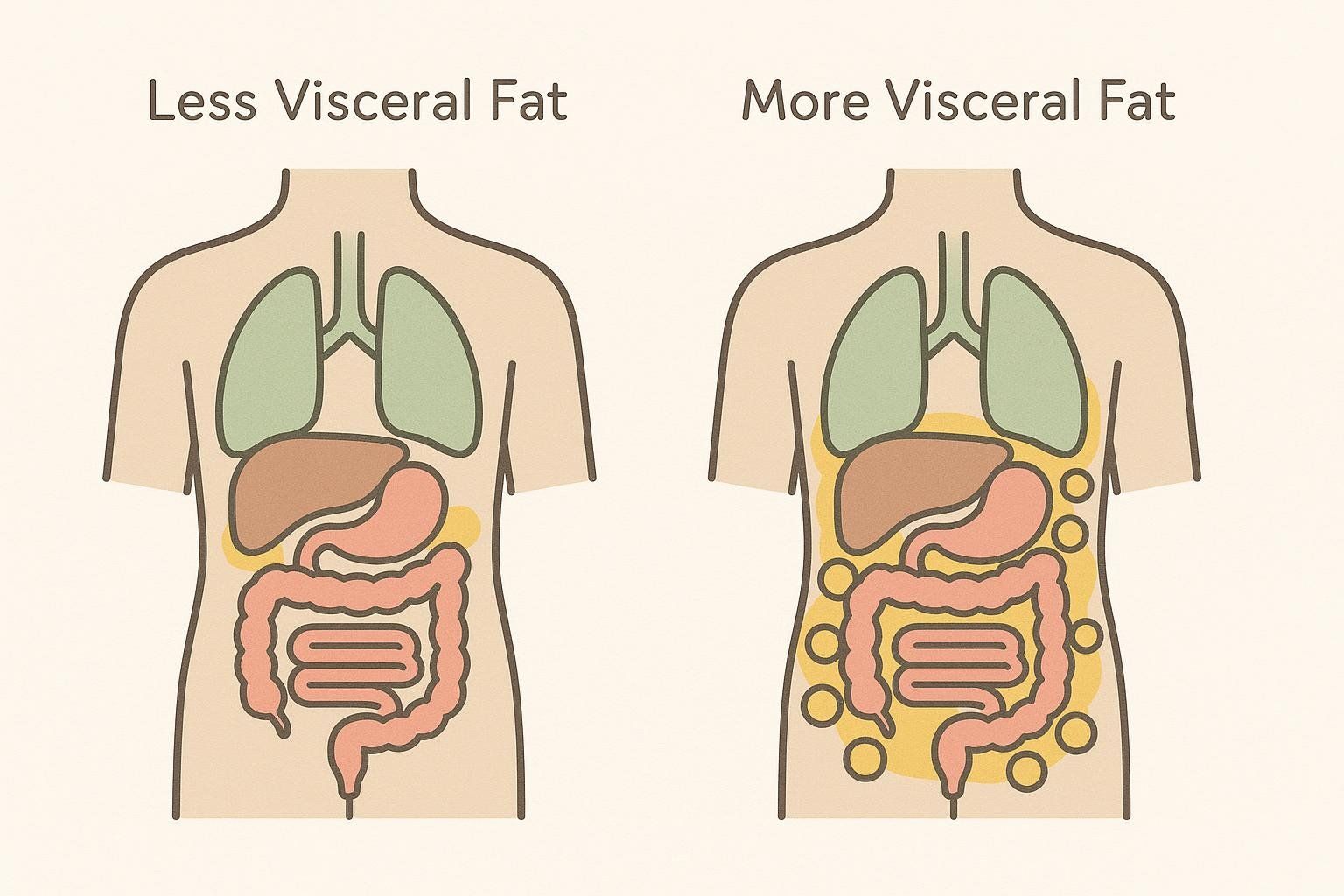
Health Risks of Mid-Life Weight Gain
| Risk | Data Snapshot | Why It Matters |
|---|---|---|
| Visceral fat | MRI data show visceral fat roughly triples between ages 20 and 70 (Neeland et al., 2019) | Drives insulin resistance & heart disease |
| Type 2 diabetes | Waist > 35 in significantly raises risk (Mayo Clinic belly-fat explainer) | Elevated fasting glucose & A1c |
| Knee osteoarthritis | Risk rises 35 % for every 5 kg/m² BMI increase (2015 meta-analysis in Rheumatology) | Extra load on joints |
| Osteoporosis | Low bone density increases fracture risk—often hidden by stable body weight | Impacts mobility and can lead to a loss of independence |
Part 1: Nutrition Strategies That Work in Mid-Life
Focus on Protein Leverage
Randomized trials show 1.2–1.6 g/kg daily protein preserves lean mass during calorie deficits (2024 review of protein leverage in post-menopausal women).
| Weight (lb) | Protein Target (g/day) |
|---|---|
| 140 | 76–100 |
| 160 | 87–116 |
| 180 | 98–131 |
Pro tip: Hit ≥ 30 g per meal to maximize muscle-protein synthesis.
High-Protein, High-Fiber Plate Template
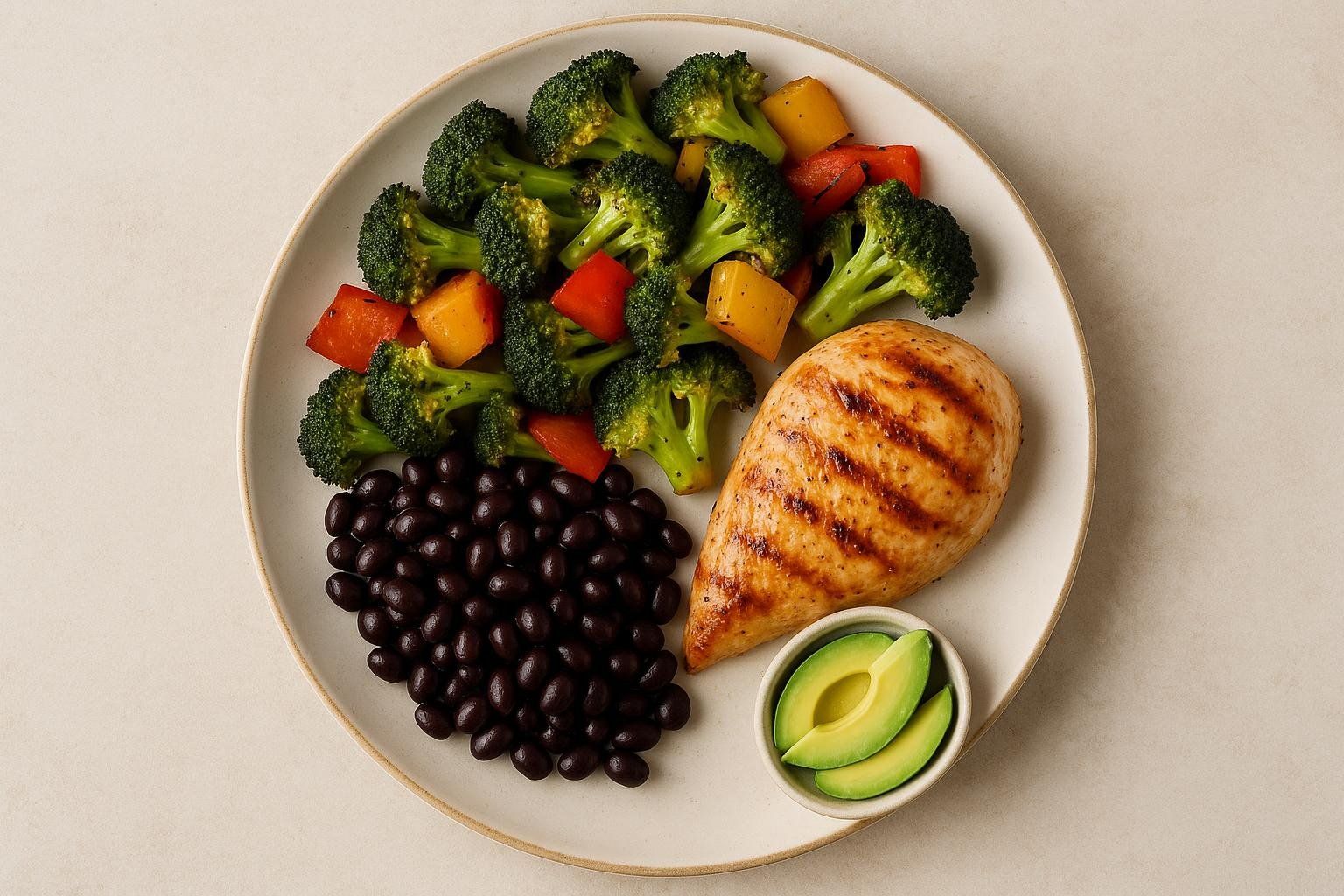
- Palm-size lean protein (salmon, tofu, chicken)
- Unlimited non-starchy vegetables
- Cupped-hand whole grains or legumes
- Thumb-size portion of healthy fat (olive oil, nuts)
Balance Blood Sugar to Tame Cravings
Fiber (25 g +) slows gastric emptying and steadies glucose. Pair carbs with protein/fat; follow meals with a 10-minute walk to boost GLUT-4 uptake. Explore how fiber supports weight management.
Smart Supplements
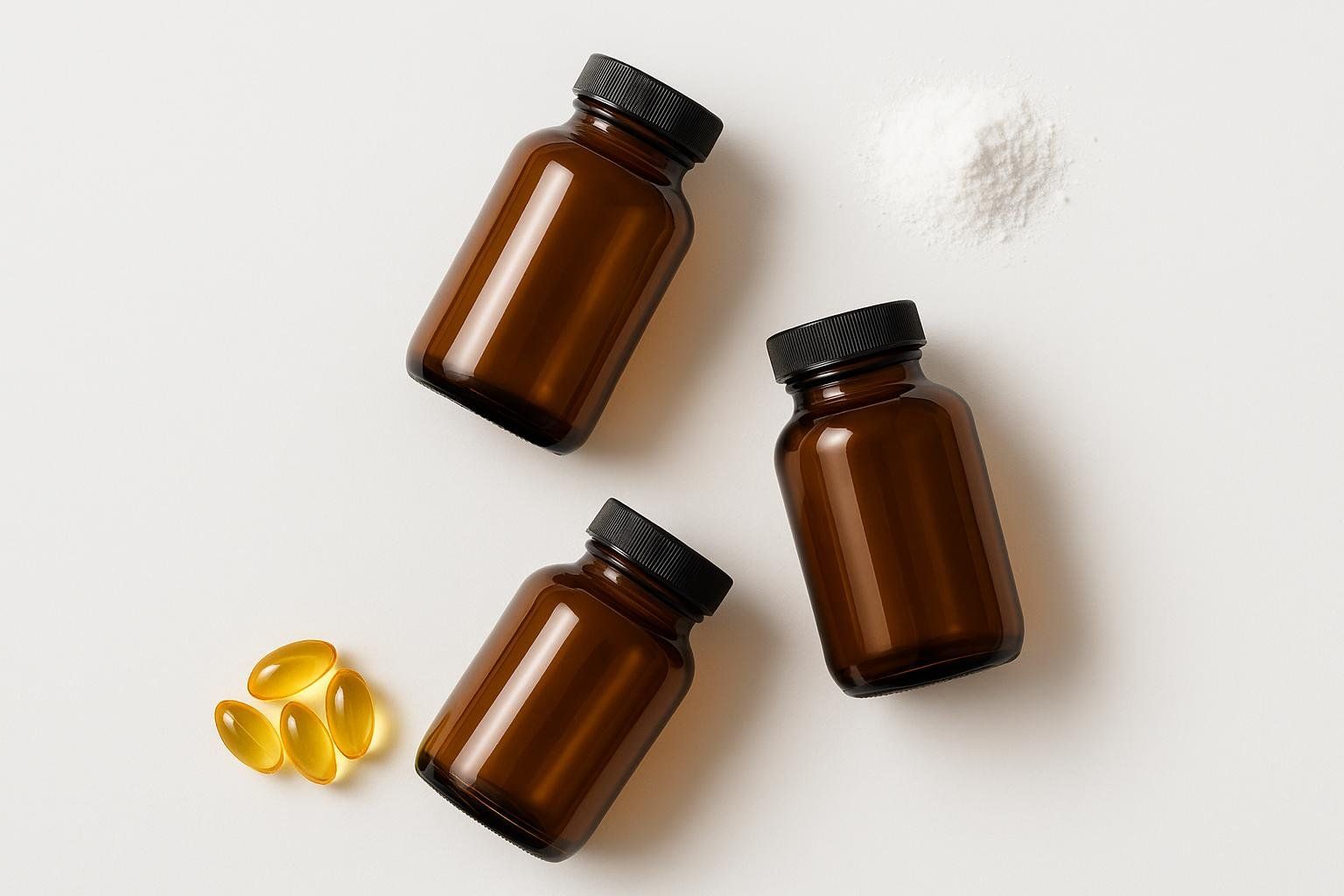
| Supplement | Evidence for Mid-Life Women | Typical Dose |
|---|---|---|
| Creatine monohydrate | A comprehensive 2021 review in Nutrients reports gains in strength & lean mass among post-menopausal women who supplement creatine with resistance training (open-access review) | 3–5 g/day |
| Vitamin D3 + K2 | Supports bone & muscle; often low post-menopause | 1,000–2,000 IU D3 |
| Omega-3s (EPA/DHA) | Reduces triglycerides & inflammation | 1–2 g combined EPA/DHA |
Always discuss new supplements with your healthcare provider.
Part 2: Exercise Blueprint—30 Minutes, Big Results
Weekly Training Split
| Day | Focus | Time | Example |
|---|---|---|---|
| Mon | Full-body strength | 30 min | Goblet squat, push-up, row, hip hinge |
| Tue | NEAT + core | — | 8,000 steps + planks |
| Wed | HIIT | 20 min | 10 × 30-sec bike sprints |
| Thu | Mobility + walk | — | Yoga or dynamic stretching |
| Fri | Strength | 30 min | Lunges, overhead press, deadlift |
| Sat | Social cardio | 45 min | Hike, pickleball |
| Sun | Rest & plan | — | Meal prep, sleep reset |
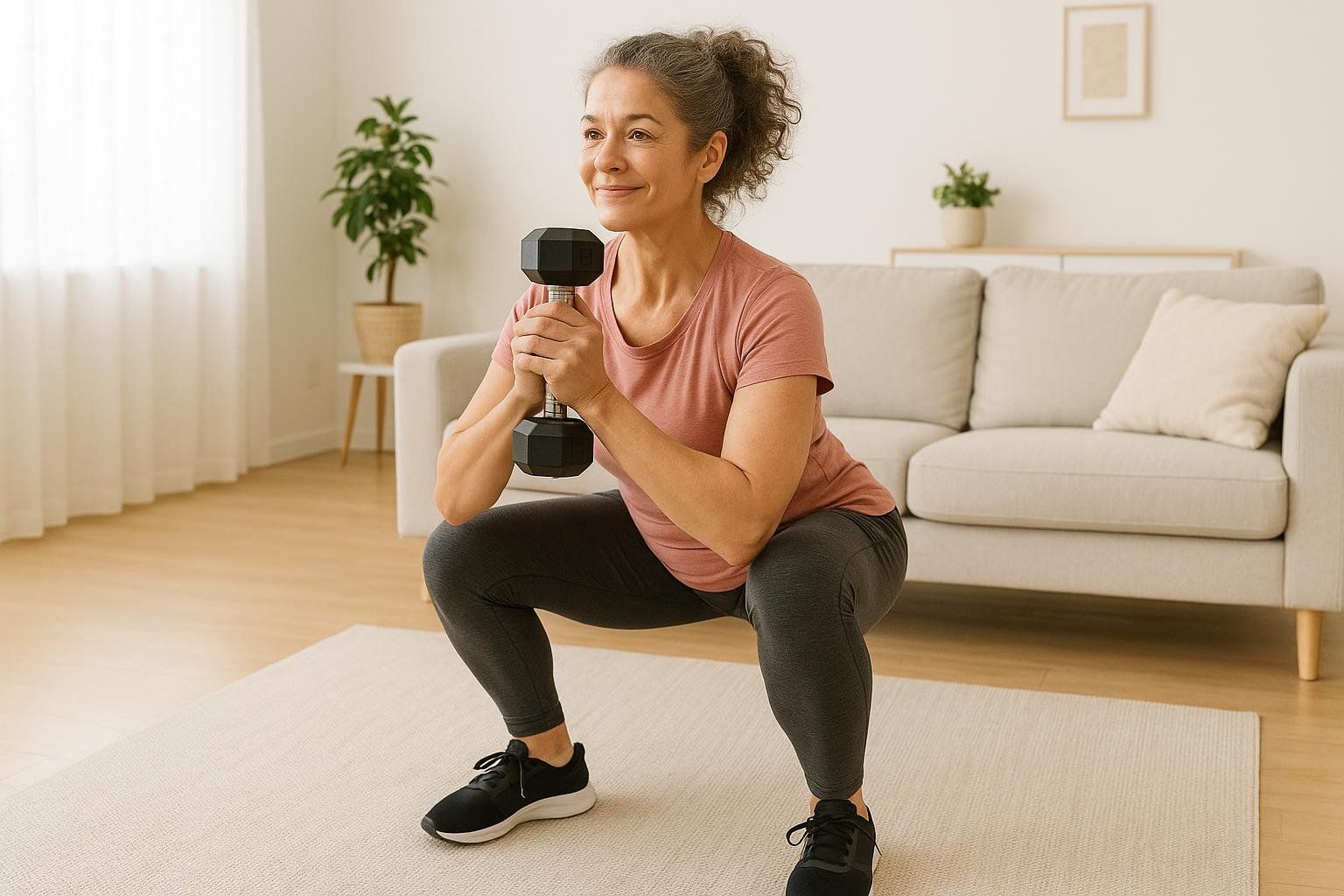
Need ideas? Check out 10 Effective Body-Composition Exercises.
Why Strength Beats Endless Cardio
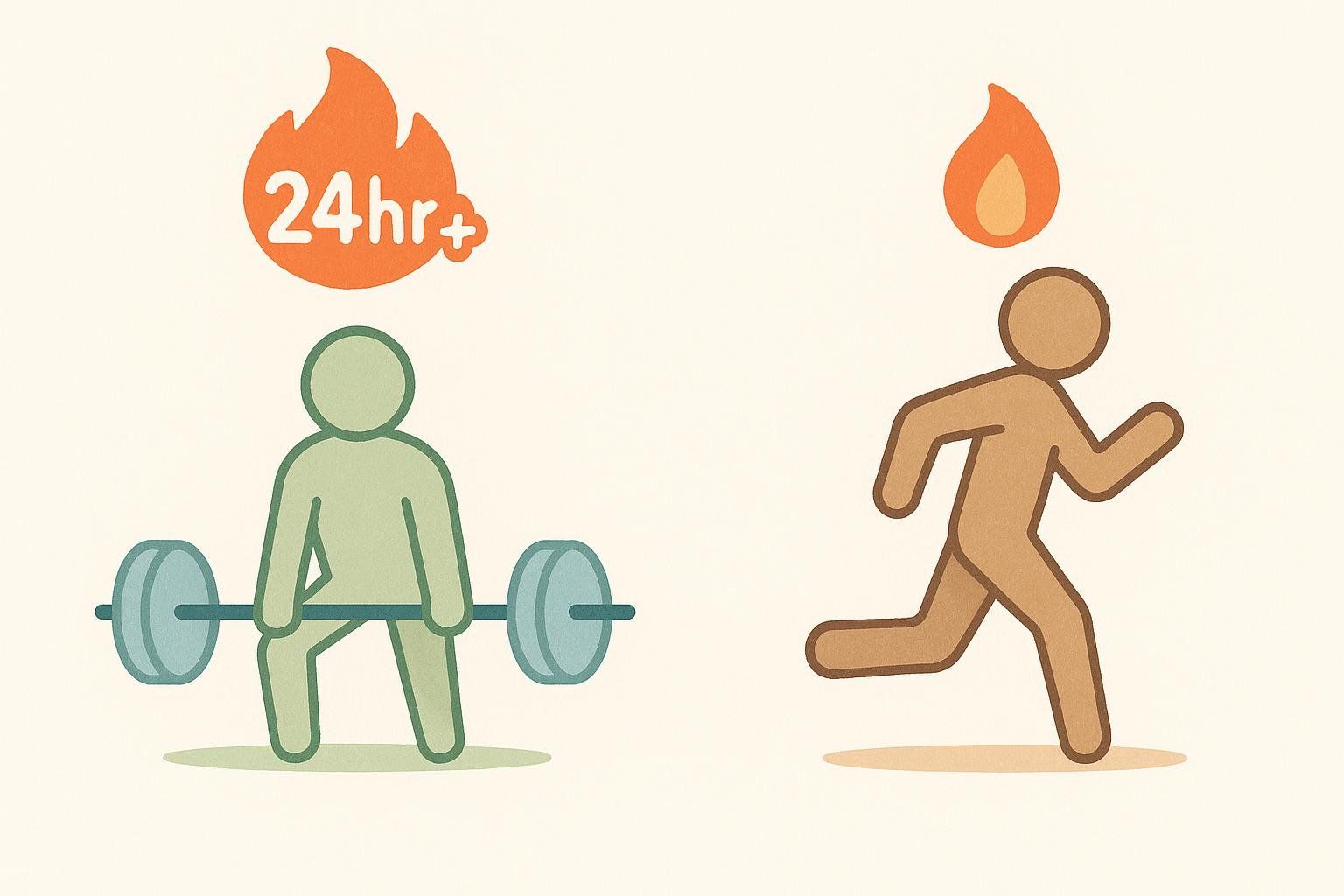
Resistance training elevates calorie burn for up to 72 hours and counters sarcopenia—cardio alone does not (2018 NSCA guidelines).
Low-Impact Options for Joint Pain
• Pool circuits
• Resistance-band routines
• Elliptical intervals
Track What Matters
Use repeat scans to monitor progress—see our guide to interpreting your DEXA scan results every 3–6 months.
Part 3: Sleep, Stress & Behavioral Tools

Combat Hot-Flash Sleep Disruptions
- Keep bedroom ≤ 68 °F
- Cooling mattress topper
- Magnesium glycinate 200–400 mg
- Cognitive Behavioral Therapy for Insomnia (CBT-I) —meta-analysis shows CBT-I improves sleep efficiency and total sleep time (2015 systematic review in Annals of Internal Medicine)
Stress-Management Menu
| Technique | Time | Calming Mechanism |
|---|---|---|
| 4-7-8 breathing | 1 min | Lowers sympathetic tone |
| Box breathing | 2 min | Improves HRV |
| Five-minute journaling | Evening | Off-loads rumination |
| Walking in nature | 20 min | ↓ cortisol 16 % (2019 study in Frontiers in Psychology) |

Part 4: Medical & Advanced Interventions
Hormone Replacement Therapy (HRT)

Starting within 10 years of menopause, transdermal estrogen + micronized progesterone may improve fat distribution & insulin sensitivity with low VTE risk in healthy women (2015 Endocrine Society clinical guideline). Discuss benefits and risks with your clinician.
GLP-1 Agonists & Anti-Obesity Meds
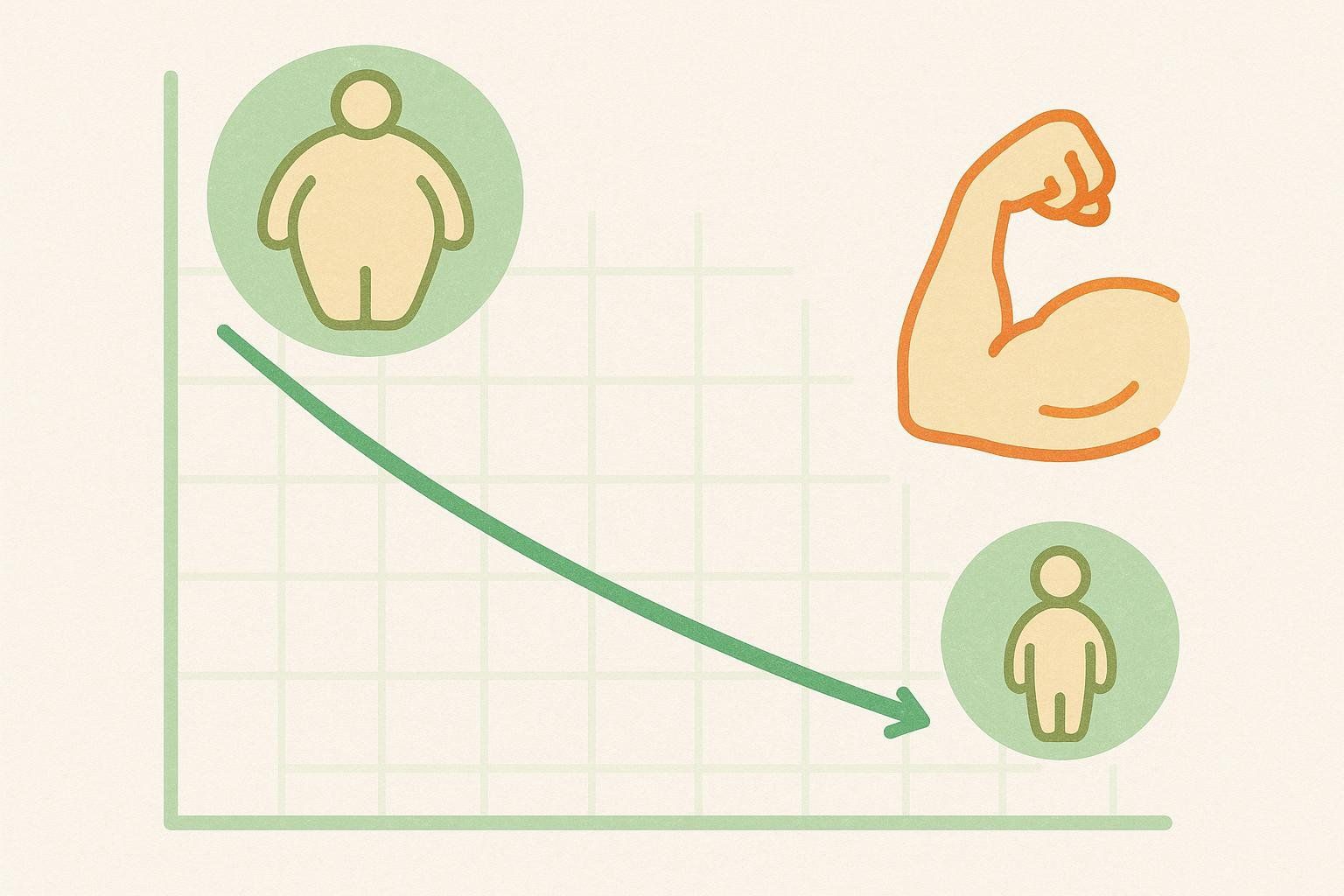
Semaglutide and tirzepatide promote > 15 % weight loss and larger visceral-fat reductions vs. lifestyle alone (2022 phase-3 trial in NEJM). Combine with high-protein diet + resistance training to protect lean mass—see our guide on preventing muscle loss with Ozempic.
Bariatric Surgery
Candidates typically have BMI ≥ 35 kg/m² with obesity-related comorbidities or BMI ≥ 40 kg/m². These thresholds are endorsed by the American Society for Metabolic and Bariatric Surgery (ASMBS/IFSO 2022 guidelines). Surgery can yield ~ 25 % long-term weight loss and substantial metabolic improvements. Post-op DEXA scans help monitor bone-density declines.
FAQ: Quick Answers to Common Questions
Is menopause belly fat inevitable?
No. Visceral fat (also called visceral adipose tissue) responds well to lifestyle change. A SWAN Fat-Patterning sub-study found that women engaging in ≥ 2 hours/week of moderate exercise gained significantly less intra-abdominal fat during menopause than less active peers (SWAN PA–visceral fat analysis).
What’s a healthy rate of weight loss post-50?
Aim for 0.5–1 lb/week to retain muscle. Faster losses risk lean-mass decline unless protein & resistance training are dialed in.
How can I tell if weight gain is fat or bloat?
A DEXA scan is far more accurate than a scale for this purpose. Fluid shifts change scale weight but not DEXA fat mass. Track waist circumference weekly for inexpensive feedback.
Are phytoestrogens helpful?
Evidence for weight control is weak—an RCT in overweight post-menopausal women found no body-weight change after 6 months of 100 mg/day soy isoflavones (2010 trial in British Journal of Nutrition).
Your 4-Step Next Move
- Run the calculator above & set calorie + protein targets.
- Create your meal & exercise plan.
- Book a BodySpec DEXA scan for baseline visceral-fat & muscle data.
- Re-scan in 12 weeks—adjust macros and workouts based on real changes, not guesswork.
Menopause marks a powerful new chapter—not an unavoidable metabolic decline. With science-backed strategies and data from BodySpec on your side, you can keep your health trajectory moving forward.
